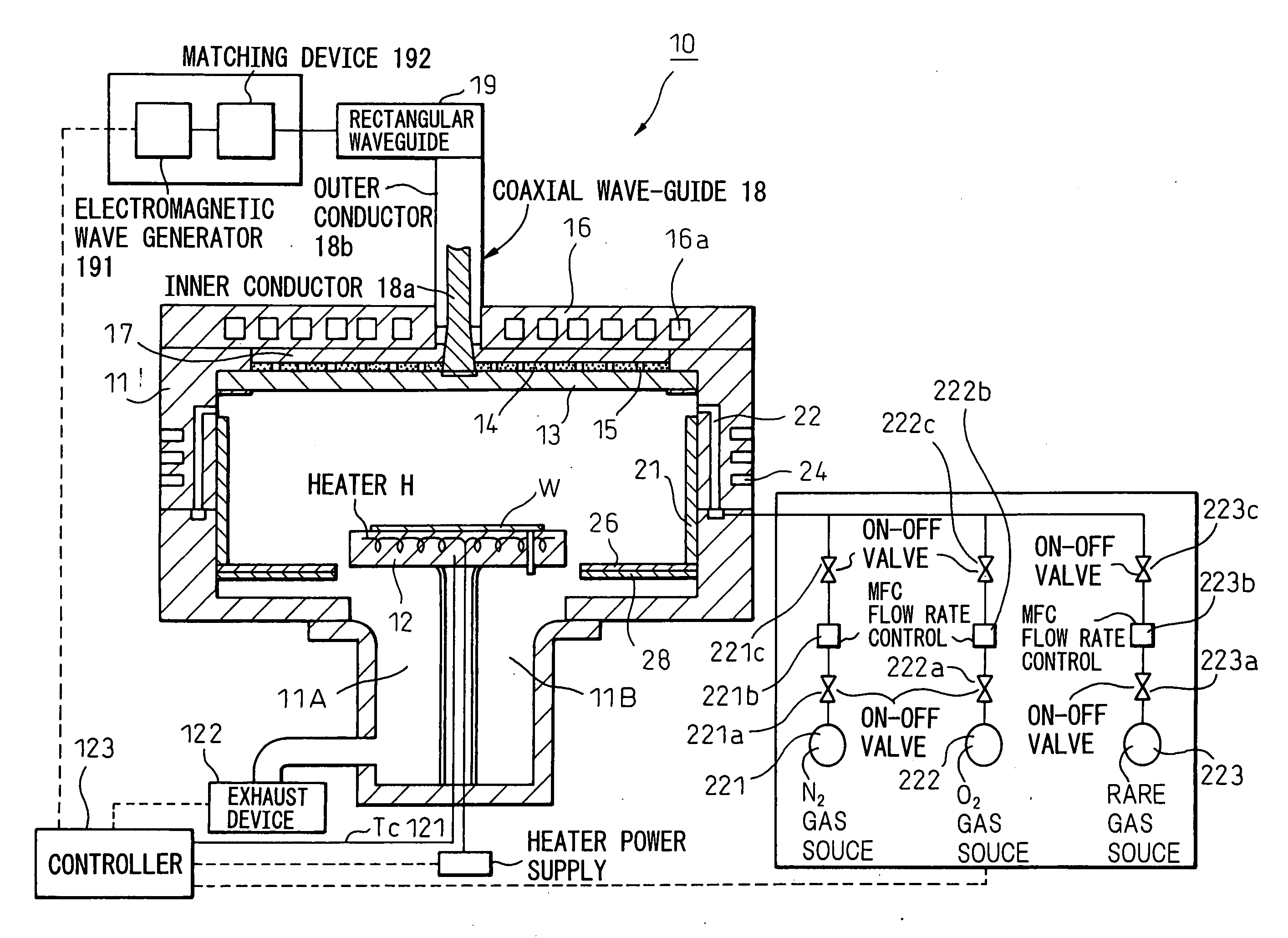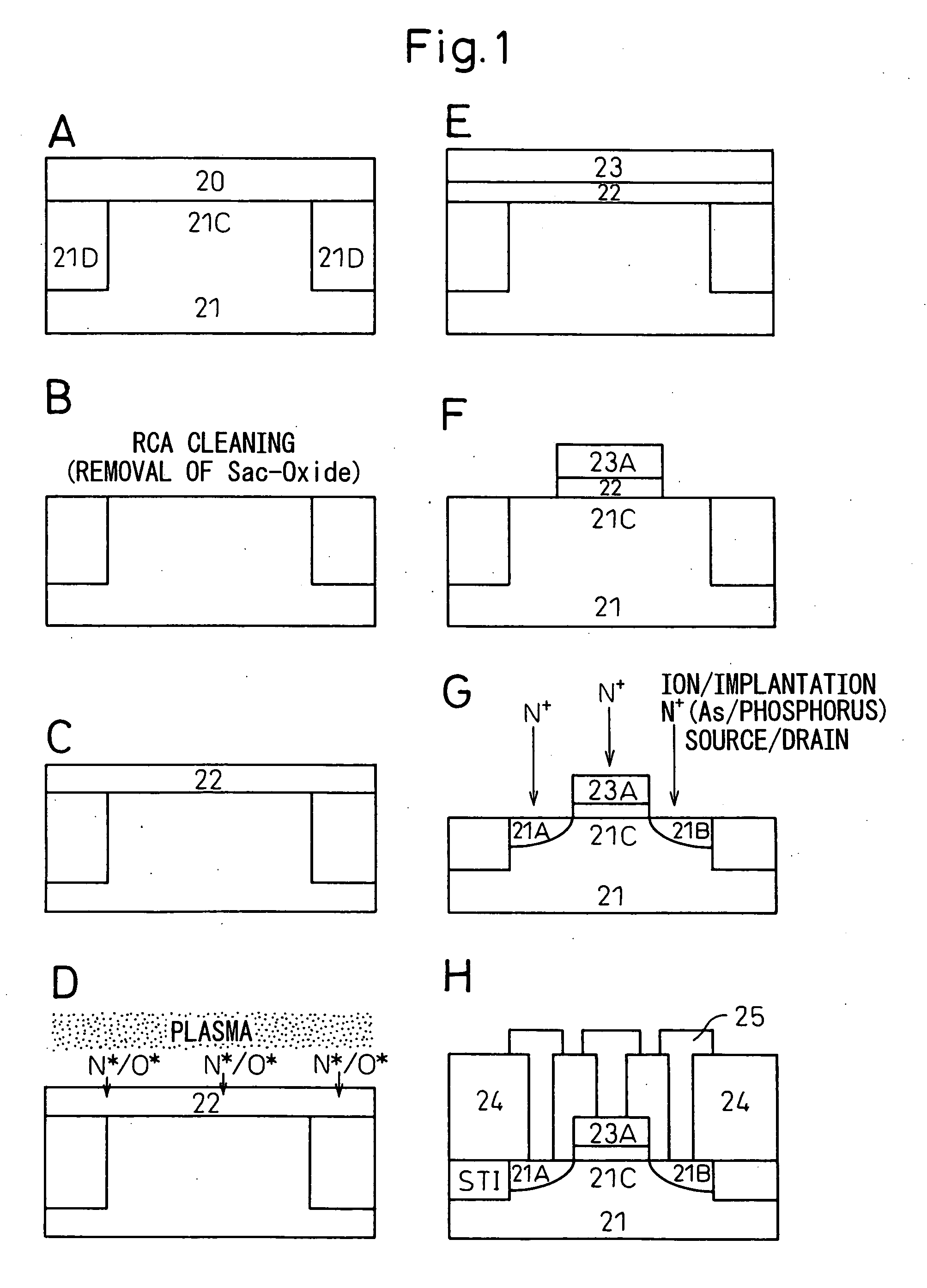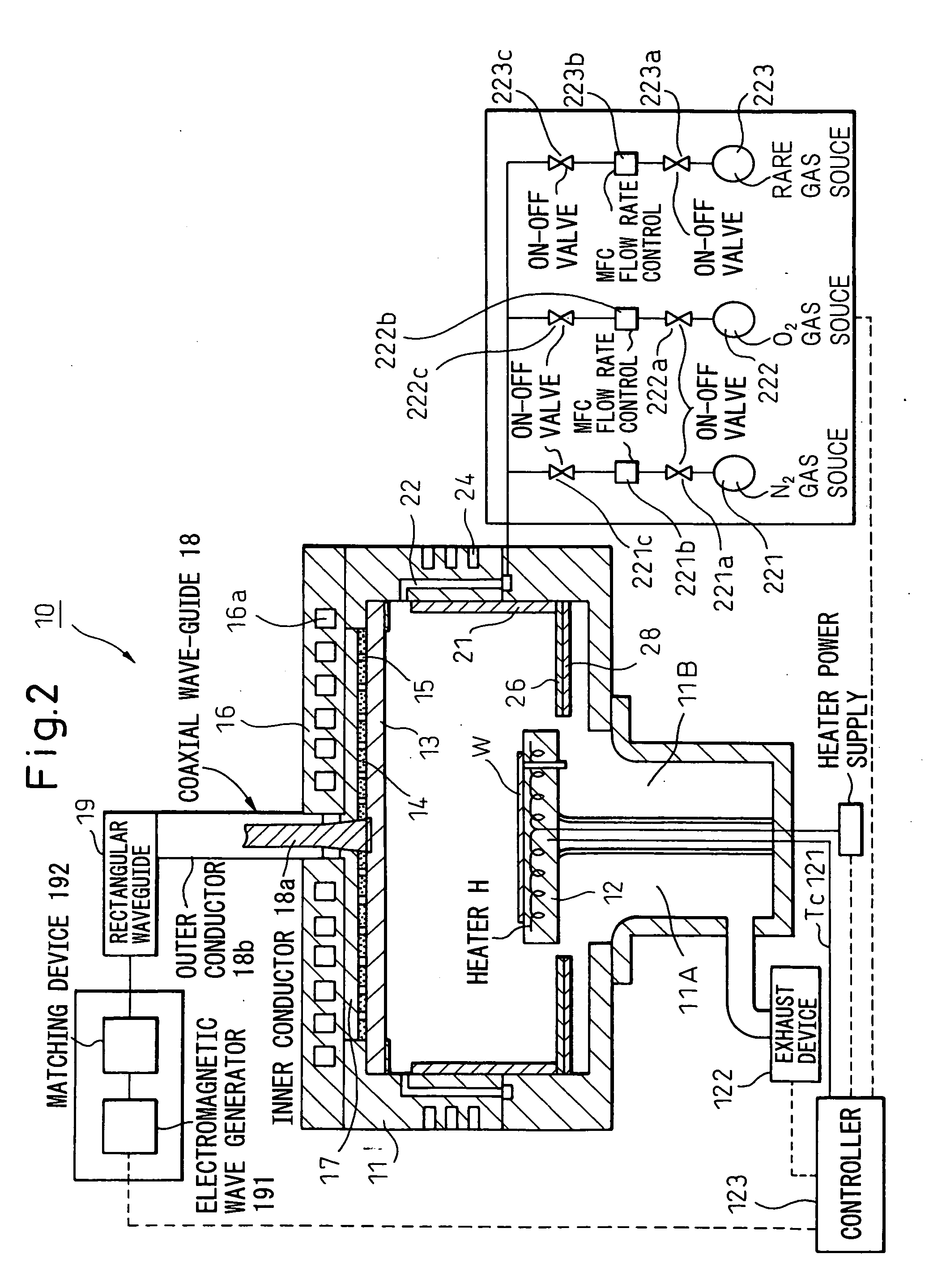Method of modifying insulating film
a technology of insulating film and treatment step, which is applied in the direction of semiconductor devices, electrical apparatus, transistors, etc., can solve the problems of consuming a large quantity of electric power, generating exponential functional increase of leakage current in direct tunnel, and large problem to be solved, so as to reduce the time of treatment and shorten the treatment time in each modification treatment step.
- Summary
- Abstract
- Description
- Claims
- Application Information
AI Technical Summary
Benefits of technology
Problems solved by technology
Method used
Image
Examples
examples
[0090]FIG. 4 shows I-V characteristics of an HfSiO film modified by using the present invention, which is one example of the present invention. In FIG. 4, the ordinate indicates a gate leakage current density of an N-type MOS capacitor comprising a P-type silicon substrate, an HfSiO film and a TiN (titanium nitride) gate electrode, and the abscissa indicates an electric field applied to the insulating film from a polysilicon gate electrode. The production method of the N-type MOS capacitor used in this Example is described below.
[0091] An HfSiO film was formed by a thermal CVD method on a P-type silicon substrate subjected to the same treatments as in FIGS. 1A and 1B. A hafnium tert-butoxide (HTB, Hf(OC4H9)4) and a silane gas (SiH4) were introduced at 1 sccm and 400 sccm, respectively, and the pressure was kept at 50 Pa. The flow rate of HTB is a flow rate on a liquid mass-flow controller and the flow rate of the silane gas is a flow rate on a gas mass-flow controller. In this atmo...
PUM
| Property | Measurement | Unit |
|---|---|---|
| temperature | aaaaa | aaaaa |
| temperature | aaaaa | aaaaa |
| temperature | aaaaa | aaaaa |
Abstract
Description
Claims
Application Information
 Login to View More
Login to View More - R&D
- Intellectual Property
- Life Sciences
- Materials
- Tech Scout
- Unparalleled Data Quality
- Higher Quality Content
- 60% Fewer Hallucinations
Browse by: Latest US Patents, China's latest patents, Technical Efficacy Thesaurus, Application Domain, Technology Topic, Popular Technical Reports.
© 2025 PatSnap. All rights reserved.Legal|Privacy policy|Modern Slavery Act Transparency Statement|Sitemap|About US| Contact US: help@patsnap.com



